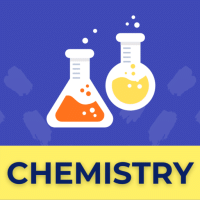Class 11 Exam > Class 11 Questions > The degree of hydrolysis of a salt of weak ac...
Start Learning for Free
The degree of hydrolysis of a salt of weak acid and weak base in it's 0.1 M solution is found to be 50%. If the molarity of the solution is 0.2 M, the percentage hydrolysis of the salt should be
- a)100%
- b)50%
- c)25%
- d)none of these
Correct answer is option 'B'. Can you explain this answer?
Verified Answer
The degree of hydrolysis of a salt of weak acid and weak base in it...
% Hydrolysis does notdepend on the conc. in case of “Weak acid + weak base : Salt”
Most Upvoted Answer
The degree of hydrolysis of a salt of weak acid and weak base in it...
Given information:
- The degree of hydrolysis of a salt of weak acid and weak base in its 0.1 M solution is 50%.
- The molarity of the solution is 0.2 M.
To determine the percentage hydrolysis of the salt, we need to understand the concept of hydrolysis and how it relates to the concentration of the solution.
Hydrolysis is a chemical reaction in which water molecules split a compound into its constituent ions. In the case of a salt of a weak acid and weak base, the cation comes from a weak base and the anion comes from a weak acid. When this salt is dissolved in water, hydrolysis occurs, resulting in the formation of the conjugate acid and base of the weak acid and weak base.
The degree of hydrolysis is defined as the extent to which the salt undergoes hydrolysis. It is usually expressed as the percentage of salt molecules that undergo hydrolysis in a given solution.
Using the given information, let's analyze the situation step by step:
1. Given that the degree of hydrolysis is 50%, this means that 50% of the salt molecules have undergone hydrolysis, while the remaining 50% remain unchanged.
2. The molarity of the solution is 0.2 M. This means that the concentration of the salt in the solution is 0.2 M.
3. Since the degree of hydrolysis is 50%, it implies that 50% of the salt molecules have reacted with water to form the conjugate acid and base. Therefore, the concentration of the conjugate acid and base would also be 0.1 M each (50% of 0.2 M).
4. The remaining 50% of the salt molecules remain unchanged, resulting in a concentration of the unreacted salt of 0.1 M (50% of 0.2 M).
5. Now, to determine the percentage hydrolysis of the salt, we compare the concentration of the hydrolyzed product (conjugate acid or base) to the initial concentration of the salt.
- The concentration of the hydrolyzed product (conjugate acid or base) is 0.1 M.
- The initial concentration of the salt is 0.2 M.
Therefore, the percentage hydrolysis can be calculated as (0.1 M / 0.2 M) × 100 = 50%.
Hence, the correct answer is option B - 50%.
- The degree of hydrolysis of a salt of weak acid and weak base in its 0.1 M solution is 50%.
- The molarity of the solution is 0.2 M.
To determine the percentage hydrolysis of the salt, we need to understand the concept of hydrolysis and how it relates to the concentration of the solution.
Hydrolysis is a chemical reaction in which water molecules split a compound into its constituent ions. In the case of a salt of a weak acid and weak base, the cation comes from a weak base and the anion comes from a weak acid. When this salt is dissolved in water, hydrolysis occurs, resulting in the formation of the conjugate acid and base of the weak acid and weak base.
The degree of hydrolysis is defined as the extent to which the salt undergoes hydrolysis. It is usually expressed as the percentage of salt molecules that undergo hydrolysis in a given solution.
Using the given information, let's analyze the situation step by step:
1. Given that the degree of hydrolysis is 50%, this means that 50% of the salt molecules have undergone hydrolysis, while the remaining 50% remain unchanged.
2. The molarity of the solution is 0.2 M. This means that the concentration of the salt in the solution is 0.2 M.
3. Since the degree of hydrolysis is 50%, it implies that 50% of the salt molecules have reacted with water to form the conjugate acid and base. Therefore, the concentration of the conjugate acid and base would also be 0.1 M each (50% of 0.2 M).
4. The remaining 50% of the salt molecules remain unchanged, resulting in a concentration of the unreacted salt of 0.1 M (50% of 0.2 M).
5. Now, to determine the percentage hydrolysis of the salt, we compare the concentration of the hydrolyzed product (conjugate acid or base) to the initial concentration of the salt.
- The concentration of the hydrolyzed product (conjugate acid or base) is 0.1 M.
- The initial concentration of the salt is 0.2 M.
Therefore, the percentage hydrolysis can be calculated as (0.1 M / 0.2 M) × 100 = 50%.
Hence, the correct answer is option B - 50%.

|
Explore Courses for Class 11 exam
|

|
Question Description
The degree of hydrolysis of a salt of weak acid and weak base in it's 0.1 M solution is found to be 50%. If the molarity of the solution is 0.2 M, the percentage hydrolysis of the salt should bea)100%b)50%c)25%d)none of theseCorrect answer is option 'B'. Can you explain this answer? for Class 11 2025 is part of Class 11 preparation. The Question and answers have been prepared according to the Class 11 exam syllabus. Information about The degree of hydrolysis of a salt of weak acid and weak base in it's 0.1 M solution is found to be 50%. If the molarity of the solution is 0.2 M, the percentage hydrolysis of the salt should bea)100%b)50%c)25%d)none of theseCorrect answer is option 'B'. Can you explain this answer? covers all topics & solutions for Class 11 2025 Exam. Find important definitions, questions, meanings, examples, exercises and tests below for The degree of hydrolysis of a salt of weak acid and weak base in it's 0.1 M solution is found to be 50%. If the molarity of the solution is 0.2 M, the percentage hydrolysis of the salt should bea)100%b)50%c)25%d)none of theseCorrect answer is option 'B'. Can you explain this answer?.
The degree of hydrolysis of a salt of weak acid and weak base in it's 0.1 M solution is found to be 50%. If the molarity of the solution is 0.2 M, the percentage hydrolysis of the salt should bea)100%b)50%c)25%d)none of theseCorrect answer is option 'B'. Can you explain this answer? for Class 11 2025 is part of Class 11 preparation. The Question and answers have been prepared according to the Class 11 exam syllabus. Information about The degree of hydrolysis of a salt of weak acid and weak base in it's 0.1 M solution is found to be 50%. If the molarity of the solution is 0.2 M, the percentage hydrolysis of the salt should bea)100%b)50%c)25%d)none of theseCorrect answer is option 'B'. Can you explain this answer? covers all topics & solutions for Class 11 2025 Exam. Find important definitions, questions, meanings, examples, exercises and tests below for The degree of hydrolysis of a salt of weak acid and weak base in it's 0.1 M solution is found to be 50%. If the molarity of the solution is 0.2 M, the percentage hydrolysis of the salt should bea)100%b)50%c)25%d)none of theseCorrect answer is option 'B'. Can you explain this answer?.
Solutions for The degree of hydrolysis of a salt of weak acid and weak base in it's 0.1 M solution is found to be 50%. If the molarity of the solution is 0.2 M, the percentage hydrolysis of the salt should bea)100%b)50%c)25%d)none of theseCorrect answer is option 'B'. Can you explain this answer? in English & in Hindi are available as part of our courses for Class 11.
Download more important topics, notes, lectures and mock test series for Class 11 Exam by signing up for free.
Here you can find the meaning of The degree of hydrolysis of a salt of weak acid and weak base in it's 0.1 M solution is found to be 50%. If the molarity of the solution is 0.2 M, the percentage hydrolysis of the salt should bea)100%b)50%c)25%d)none of theseCorrect answer is option 'B'. Can you explain this answer? defined & explained in the simplest way possible. Besides giving the explanation of
The degree of hydrolysis of a salt of weak acid and weak base in it's 0.1 M solution is found to be 50%. If the molarity of the solution is 0.2 M, the percentage hydrolysis of the salt should bea)100%b)50%c)25%d)none of theseCorrect answer is option 'B'. Can you explain this answer?, a detailed solution for The degree of hydrolysis of a salt of weak acid and weak base in it's 0.1 M solution is found to be 50%. If the molarity of the solution is 0.2 M, the percentage hydrolysis of the salt should bea)100%b)50%c)25%d)none of theseCorrect answer is option 'B'. Can you explain this answer? has been provided alongside types of The degree of hydrolysis of a salt of weak acid and weak base in it's 0.1 M solution is found to be 50%. If the molarity of the solution is 0.2 M, the percentage hydrolysis of the salt should bea)100%b)50%c)25%d)none of theseCorrect answer is option 'B'. Can you explain this answer? theory, EduRev gives you an
ample number of questions to practice The degree of hydrolysis of a salt of weak acid and weak base in it's 0.1 M solution is found to be 50%. If the molarity of the solution is 0.2 M, the percentage hydrolysis of the salt should bea)100%b)50%c)25%d)none of theseCorrect answer is option 'B'. Can you explain this answer? tests, examples and also practice Class 11 tests.

|
Explore Courses for Class 11 exam
|

|
Signup for Free!
Signup to see your scores go up within 7 days! Learn & Practice with 1000+ FREE Notes, Videos & Tests.


















